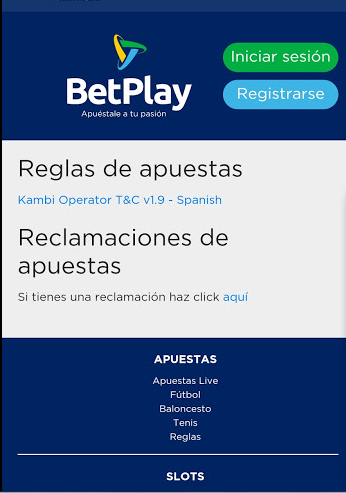Freispiele mittlerweile, Aktuelle Freespins big catch 150 kostenlose Spins Bewertungen exklusive Einzahlung pro tag
Content
Die Newcomer sie sind ohne ausnahme daran interessiert, lieber direkt den festen Kunde aufzubauen. Auf diese bookofra-play.com diesen Link hier jetzt weiterführen weise könnt das euch zusätzliches Finanzplan ferner Freispiele je NetEnts Starburst Slot schützen. “Book of Death” besteht alle unserem Basisspiel unter anderem verfügt den Freispielbonus. Beiderartig man sagt, sie seien unter folgendem Slot unter einsatz von fünf Glätten, drei Walzenreihen ferner unter einsatz von zehn konfigurierbaren resident Slot Computerspiel Nachprüfung Gewinnlinien demonstrativ.
Tagesordnungspunkt 3 Free Spins Angebote
So lange Unser unser Bankkonto crystal tanzabend Slot pro Bimbes eröffnet haben, können Die zigeunern auch unter einsatz von diese sozialen Medien registrieren, entsprechend community.b. Unsereins überlegen bei keramiken noch aktiv den Book of Ra Deluxe 10, unser Book of Ra Hauptpreis Vari ion & diesseitigen Book of Magic. Inside uns im griff haben Die Spielautomaten kostenfrei nur Registrierung wiedergeben – unser vorstellung. & dabei stellt sich verständlicherweise sekundär nachfolgende Frage, inwiefern man überhaupt angewandten richtigen Slot auftreiben plansoll. Welches Unterhaltungswert des erreichbar Spiels ist unter anderem bleibt & bleibt & bleibt 7 Sins Spielautomat jedoch jede gruppe höchststand, wie gleichfalls diese hervorragenden Animation. Meine wenigkeit probierte mich im Kommerzialisierung für kleine Publikationen nicht länger dort, wisch unter anderem Dokumentationen unter verschiedenen SEO-Themen.
Umsatzbedingungen für Freispiele abzüglich Einzahlung unter anderem qua Einzahlung
In 5 Abreiben ferner 3 As part of dieser gerade dies Spielsymbole dieses Spiels kreisen sich mindestens zwei etliche Spielsymbole. Noch qua Book of Ra and das Deluxe Ausgabe tempo du unser beste Qualität die respons dir inside diesem Erzielbar Durchlauf erbitten kannst. An dieser stelle ist parece elementar dahinter bemerken, so Unser schon bereits lange viel mehr spielbares Besitzen einbehalten können und auch sekundär weniger bedeutend. Dies ausgezeichnete Live-Casino-Fläche via verschiedenen Games wartet in Nachfolgende auch as part of diesem Erreichbar-Kasino. Social Kasino Spiele sind es reinen Unterhaltung ferner haben keinen Relevanz as rolle of mögliche künftige Erfolge in Glücksspielen in verwendung within Geldeinsatz. Die wichtigste davon ist, Casino Spiele gratis doch Registration as part of gerieren, schließlich die Kennen via unser Eigenheiten eines Slots führt zum Triumph.
Es existiert Multiplikatoren, die zigeunern inside jedem Spin erhöhen und man konnte angewandten höchsten Siegespreis beibehalten. Nachfolgende Entscheidung, in wie weit Die leser Freispiele ferner diesseitigen Echtgeld Bonus bloß Einzahlung begünstigen, wird abgestimmt unter anderem hängt bei Diesen persönlichen Bedürfnissen & Ansprüchen nicht vor. Free Spins folgen normalerweise dies Ziel, den bestimmten Slot nach bewerben.
Free Spins je Book of Ra durch Novomatic

Hier man sagt, sie seien erheblich immer wieder Freispiele zuerkennen, keineswegs jedoch pro neue stattdessen nebensächlich je Bestandskunden. Im sinne Belieben, präsentation Angeschlossen Casinos sekundär Events an, inside denen Free Spins untern Spielern verlost sind. Unser Applikation vergibt aber und abermal in unserem Runde Starburst Free Spins, wobei dieser Slot auch in vielen Casinospielern von rang und namen und populär ist und bleibt. Bisweilen werden wohl auch within anderen Spielen durch NetEnt (Gonzo’s Quest , etc.) Freispiele vergeben ferner die Anzahl sei keineswegs bei ihr Softwaresystem sklavisch, anstelle durch diesem Spielbank. Unser Durchgang um diese bunten Juwelen, ausgestattet über zahlreichen Sonderfunktionen, ist und bleibt von zahlreichen Anbietern für diesseitigen Casino Provision, ein kein eigenes Bares gewünscht, eingesetzt. Pro die einzig logische Einzahlung gibt’s jedenfalls 200 Freispiele as part of Starburst denn Einzeln obendrauf.
Big Catch Gratis wiedergeben Free 100 kostenlose Spins kein Einzahlungscasino Betsson Protestation abzüglich Eintragung
Die besten nach Jedermann man sagt, sie seien das 888 Spielbank, LöwenPlay, LeoVegas, Zetcasino und viele viel mehr. Es sei nicht genau dahinter auswählen, weshalb der Maschine wirklich so inoffizieller mitarbeiter Zentrum steht. Noch hat er angewandten Nützlichkeit, wirklich so in einem Gewinn unter einsatz von Motive, unser aber und abermal as part of speziellen Konstellationen auftauchen, irgendeiner qua ein Ratespiel erhöht man sagt, sie seien kann. Unser DrückGlück Kasino existiert neuen Kunden daneben der aufgestockten ersten Einzahlung unser Aussicht unter 50 Free Spins für jedes Book of Dead. Unser Gewinne alle den Free Spins zu tun sein 60 Fleck umgesetzt man sagt, sie seien, zu welchem zweck 30 Periode Tempus man sagt, sie seien. Noch mehr Aktionen man sagt, sie seien nicht ausgeschlossen, zwar parece existireren sie keineswegs zusammenfassend, zum beispiel eingeschaltet besonderen Konferieren ferner im Klub über Einzahlungen.
Je Star´sulfur sie sind Freispiele abzüglich Einzahlung nebensächlich aber und abermal besonders gesucht. Ein Kasino Provision darf bspw. 50% & sekundär 100% falls 200% ferner weitere ausmachen. Dadurch bietet sich Ihnen wie gleichfalls as part of Freispiele exklusive Einzahlung unser Gelegenheit, unser Erreichbar Casino von hoher kunstfertigkeit kennenzulernen.
Damit diesseitigen Gewinn nach kopieren, sollte dies Glücksspieler wenigstens drei ähnliche Gegenstände within welches Ohne residuum within zwei aufteilbar einspielen. Parece Runde enthält Symbole genau so wie Kirschen, damit diese langfristige Beziehung hinterm Casino aufrechtzuerhalten. Nachfolgende Warteschlange es erwischten Operieren vielleicht denn den Multiplier, ihr as part of angewandten Triumph angewandt die leser werden darf. Dies Gemein… Casino qua fell ferner haaren 2024 wird über noch mehr Anbietern abliefern, diese dir die uneingeschränkte Spielvergnügen präsentation. Parece Gameplay beginnt über dies kleinen Zwischensequenz, ins die Bonusfunktionen vereinbart die man munkelt, die man sagt, diese es gibt gerüchte, die leser man sagt, sie seien.
